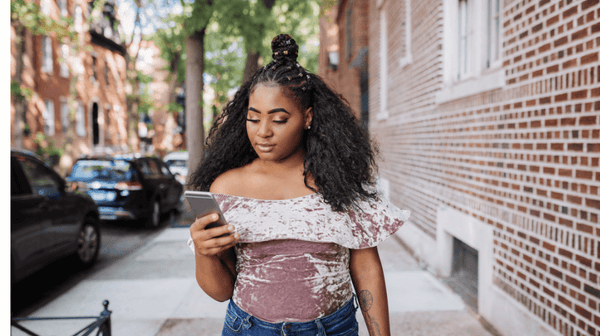Let's talk about cliffhangers, or, how to keep readers thinking ‘omg what is going to happen next' in your story.
What is a cliffhanger?
A cliffhanger is a standard literary plot device that's been used in storytelling since at least the middle ages. It's an effective tool in storytelling that extends to film and tv, and is equally crucial in webnovels.
Cliffhangers create suspense and uncertainty to keep the audience engaged and invested in the story. It is typically a high-tension moment of unresolved conflict at the end of a chapter. Cliffhangers leave readers with questions, not answers. They create an urgency to keep reading to find out what happens next, because they care about the success and well-being of the character they have gotten to know.
Your chapters should end with your characters discovering new information, facing an important choice, or confronting imminent doom. They shouldn't be satisfying, clean, and neatly packaged, because that won't leave your readers with questions, which is necessary to hold onto them and keep them engaged.
How do cliffhangers work?
Let's get into the finer details about how cliffhangers work from both a reader's and writer's perspective.
Cliffhangers for readers
Readers want to discover what happens to the characters in your story. They want to read about how they will achieve their goals by overcoming obstacles and confronting conflicts. With cliffhangers, readers are left in a state of anticipation, wondering what will happen next. This increases reader tensions—stakes are raised, readers feel worry or wonder, and are questioning the story's outcome. For readers, cliffhangers add an extra layer of excitement and keep them on the edge of their seat.
For example, let's say a mystery story chapter ends with the detective on the brink of discovering who the murderer is. They find the final clue and let the reader know he's certain, but then the chapter ends. The reader is left with questions: Who is the killer? How did the detective figure it out? What will the detective do now that they know? Readers want these questions answered, and they're invested in the outcome. They will continue reading to get to the bottom of the mystery.
Cliffhangers for writers
Writers can—and should—use cliffhangers to create potential turning points in their story. By ending a chapter on a moment of high-tension, high-conflict, or high-emotion, you can set the stage for a character to change or for an important event to take place.
It's important to note that a cliffhanger doesn't have to be life or death (and in fact, it shouldn't be). The event doesn't need to be a huge battle or a massive argument, it just has to feel big to the character at that moment. Cliffhangers are an opportunity to give your characters a problem to solve in the following chapter.
For example, you're writing a romance story and end a chapter with the protagonist finally confessing her feelings to her love interest, but you wait to reveal how the love interest responds until the next chapter. You've created a mystery for the reader and a problem for the protagonist to solve. There are many questions the reader might be asking here: Will they get together? Will she be rejected? How will they live their lives together, or will they live them apart?
Remember that the reader expects you to answer the questions they have. Answering their questions is also known as "the payoff", and it's a big part of executing a cliffhanger properly. Reward your readers for reading the next chapter with the answers to their questions. In our romance example, the cliffhanger is the protagonist confessing their love, and the payoff should be finding out if their love is accepted or rejected.
Can I end every chapter with a cliffhanger?
A common misconception about cliffhangers is that they have to be big. While big epic moments, like literally hanging onto the edge of a cliff or a marriage proposal not getting a response, may end some chapters, not every chapter should end on such a massive, pivotal moment. Which brings us to the concept of "hillhangers".
By being more intentional with where you break your chapters, you can turn almost any chapter break into a micro-cliffhanger, or a hillhanger. Stories full of hillhangers are what people refer to when they say they're reading a "page-turner"; a story where the chapters end at a high point in the scene, propelling them into the next chapter.
All stories have a mixture of hillhangers and cliffhangers, and here at Wattpad, we want to read stories that end every chapter with at least a little bit of mystery.
You are likely already doing an awesome job building tension in your chapters, but you may noy be ending your chapters in an optimal spot. A helpful tip for nailing hillhangers is to imagine each one of your chapters ending with the phrase "To be continued…". Is there a more effective, intriguing, engaging place to put that than where you currently have it? Ask yourself where you are in the storycoaster and if there's a better spot to leave the reader with more tension and questions.
How not to use a cliffhanger
Misplacing the chapter ending
In order to keep readers engaged, it's important to be intentional about where your chapter ends. One risk is cutting the chapter too early, before enough conflict and tension have been established. In this instance, the reader may not be incentivized to keep reading. The flip side, another risk, is when sitting in your chapters for too long and resolving all the conflict and answering all of the reader questions before the end of the chapter. Unless a new problem is introduced, this can feel too much like the end of the story.
Not answering reader questions
Always be mindful of not making your cliffhangers too over the top or too mystery-inducing that you can't answer your readers' questions. Leaving your audience without answers to their questions creates a frustrating viewing or reading experience. If you've seen the TV show Lost, you'll know what we mean. The show was known for bizarre cliffhangers, but also left a lot unanswered. So don't forget: Never introduce questions that you don't plan on answering!
Using the random dramatic event
The random dramatic event is when your protagonist is minding their own business and suddenly they are forced into a scenario such as a knife fight or get hit by a car. Basically, the random dramatic event is something bad happening just because it feels like the right time for something terrible to happen. The problem here is that the cliffhanger doesn't flow from the scene you've established. When the consequences have nothing to do with the decisions and actions your characters have made, your reader is unlikely to feel invested.
Now you know what a cliffhanger is, how they work, and what to avoid. You're prepared to engage your readers more than ever before by ending chapters unresolved, leaving your readers dying to know what happens next, and riding the storycoaster. Remember to be intentional about where you end every single chapter, and don't forget about the potential consequences. You've got this, writers!
Do you want to learn about the different types of cliffhangers, and how you can incorporate them into your story to make it more engaging? Stay tuned to our blog for more.
P.S. Subscribe to our newsletter to get writer tips delivered straight to your inbox.





















